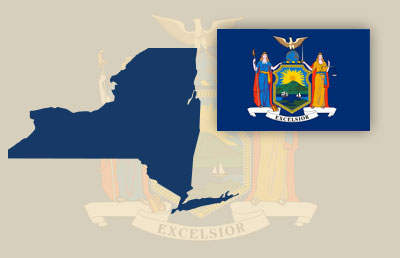New York Enacts Provisions Concerning Administration of Digital Assets

New York recently enacted provisions concerning the administration of digital assets which take effect immediately.
Applicability; Procedure for Disclosure; User Directions
The article applies to fiduciaries acting under a will, trust or power of attorney; executors, administrators and personal representatives of decedents; guardians; trustees acting under a trust; and custodians (if the user resides in the state of New York). These parties must have been granted their powers on or after the article’s effective date.
This article provides user direction for disclosure of digital assets in the following situations:
- (a) A user may use an online tool to direct the custodian to disclose to a designated recipient or not to disclose some or all of the user’s digital assets, including the content of electronic communications. If the online tool allows the user to modify or delete a direction at all times, a direction regarding disclosure using an online tool overrides a contrary direction by the user in a will, trust, power of attorney, or other record.
- (b) If a user has not used an online tool to give direction under paragraph (a) or if the custodian has not provided an online tool, the user may allow or prohibit in a will, trust, power of attorney, or other record, disclosure to a fiduciary of some or all of the user’s digital assets, including the content of electronic communications sent or received by the user.
- (c) A user’s direction under paragraph (a) or (b) overrides a contrary provision in a terms-of-service agreement that does not require the user to act affirmatively and distinctly from the user’s assent to the terms of service.
The article does not infringe upon the right of a custodian or user under a terms-of-service agreement to access and utilize digital assets of the user. Nor does it give a fiduciary or other designated representative extended rights other than those held by the user for whom they represent. However, the fiduciary or designated recipient’s access to digital assets can be either altered or removed by either the user, federal law or a terms-of-service agreement if no guidance was provided by the user.
The procedure for disclosing digital assets allows the custodian to grant access to the user’s account to a fiduciary or designated recipient fully or partially or to provide copies of records to which a deceased user would have had access. The custodian is allowed to charge a fee for these disclosures. However, a custodian does not have to disclose a digital asset that a user has deleted. Also, if a user requests that a custodian disclosure some but not all of their digital assets and this request creates an undue burden, the custodian or fiduciary may request a court order to disclose a subset of the digital assets by date, all of the assets, none of the assets or all of the assets to be reviewed in camera.
Disclosure of Digital Assets to Fiduciary
Part 3 of the article outlines the disclosure of content of electronic communications of a deceased user. This portion of the articles explains procedures for principals, trustees, and guardians of wards who wish to access these communications. For example, guardians of wards must make their request in writing and provide a certified copy of the court order that grants them authority over the ward’s digital assets.
Fiduciary Duty and Authority, Compliance and Immunity
Part 4 of the article describes the legal duties of fiduciaries. These duties mirror those imposed on a fiduciary who manages tangible property such as the duty of care, the duty of loyalty and the duty of confidentiality.
Custodians must honor a request for disclosure of digital assets or terminate a user’s account within 60 days receipt. Failure to do so may result in a court order directing compliance. Furthermore, custodians must notify users when a request for disclosure or account termination has been made.

Comments are closed.